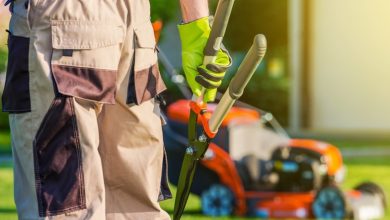Construction Tools: How To Make Directional Drills Easier

Want to have the easiest time working with directional drilling tools? Wondering what you should know about directional drilling best practices?
In the construction industry, horizontal directional drilling (HDD) is a common practice that will need to be completed with efficiency. Unfortunately, working with directional drills can be tricky and it can be hard to handle if you don’t know the best practices for doing so.
We’re here to help. Here’s how you can make using directional drills as easy as possible.
1. Protect Threads and Keep Equipment Clean
One thing that you can do to ensure that your directional drills are working correctly and efficiently is to clean your tooling often.
You should also work to protect the threads on your equipment. To protect the threads on your drilling tools, you can use a thread cap or tape.
Don’t underestimate the importance of keeping the threads well-protected. When threads become damaged, it will also negatively impact anything that is connected all the way down to the drill string.
By keeping tools clean and threads protected, your equipment will work more efficiently and drilling will be much easier for you.
2. Replace Drill Bits As Needed
Another thing that you should do to make horizontal directional drilling easier is to ensure that drill bits are replaced when necessary. If you don’t replace the drill bits as soon as needed, it can cause problems and can reduce the efficiency of the drilling process.
By taking care of the teeth on the drill and ensuring they stay in great shape, you’ll have an easier time drilling overall.
3. Reduce Wear on the Drill Pipe
Another thing that you should do to keep your drill working well is to rotate the drill pipe as needed. A drill pipe needs to stay in good condition because it can greatly affect the directional bore and cause more problems if left unchecked.
The drill pipe can get worn out quickly, so you’ll want to do what you can to extend its life as much as possible. Regularly rotating the drill pipe and starting with a different piece of it every time can be helpful.
By rotating the drill pipe, you’ll ensure that every part of the pipe gets worn out equally. As a result, you’ll ensure that the drill pipe lasts longer than it would have otherwise.
4. Understand Ground Needs
When working with a directional drill, you should also consider the ground conditions carefully. The ground conditions can affect which equipment you use and how you approach drilling.
You need to ensure that you select the right equipment for directional bores. This will help lead to a successful outcome and will also reduce the level of wear on a piece of equipment. There are many ground types and they all require different equipment to drill efficiently and correctly.
You’ll want to use the right equipment and consider the ground type carefully. Ground types can include mud, rock, sand, and more.
Considering the ground type beforehand will make drilling as easy as possible for you and will help ensure that you don’t cause any unnecessary damage to your equipment.
5. Make Use of Drilling Fluid
In addition to using the right equipment, one of the things that you can do to reduce wear on the drill and increase efficiency is to correctly make use of drilling fluid. Fluid will help protect the bottom of the drill string as well as the drill pipe.
Be sure that you’re always using the right type of fluid for the right type of ground that you’ll be drilling. The fluid formula might need to be adjusted. You shouldn’t take the same approach with sand as you would take with clay soil, for example.
Be sure to pay attention when drilling. If there’s too much rotary torque, you’ll need to adjust your fluid as needed.
6. Use a Reliable HDD Locator
One of the best things you can do to make drilling easier is to use a reliable HDD locating system.
When using a locating system, a drilling transmitter will be installed on a horizontal directional drilling cutting head. This transmitter will send a signal to a receiver at ground level. The transmitter can do all kinds of useful things to help a driller determine the progress that they’re making.
A transmitter can give you information about location, depth, and temperature. This can help do a great job of improving drilling work and increasing efficiency.
If you’re looking for a great HDD transmitter, you may want to read more about the 5XD 19/12 Sonde Transmitter now.
7. Inspect Equipment Before Getting Started
Before getting started on a drilling project, it’s important to inspect equipment thoroughly. A problem with a piece of equipment can cause extreme inefficiency and can lead to you needing to start drilling all over from the beginning.
To check your equipment and inspect it properly, you’ll want to do a number of things to make sure that it’s all in good working order. This includes checking connections and ensuring they’re tight, checking for signs of extensive wear, and checking for hairline fractures.
Checking for these potential drill problems will help you ensure that your equipment works well. As a result, you won’t have to deal with a breakdown while you’re in the middle of making progress with a drilling project.
Successfully Using Horizontal Directional Drills
If you want to make using directional drills as easy as possible, you need to make use of the above tips and advice. By using the tips above, you’ll be able to have an efficient time drilling and we’ll keep your drills in top shape.
In search of more construction guides and advice? Browse our blog now to discover more useful construction tips and tricks.






